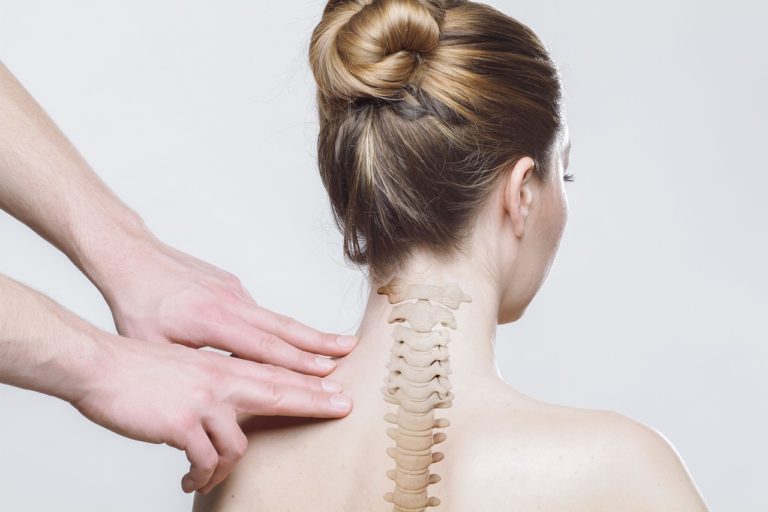Clinical Study 1
A calcium-collagen chelate dietary supplement attenuates bone loss in postmenopausal women with osteopenia: a randomized controlled trial
Marcus L Elam, Sarah A Johnson, Shirin Hooshmand, Rafaela G Feresin, Mark E Payton, Jennifer Gu, Bahram H Arjmandi
Abstract
Menopause leads to an increased risk for osteoporosis in women. Although drug therapies exist, increasing numbers of people prefer alternative therapies such as dietary supplements, for example, calcium, vitamin D, and collagen hydrolysates for the prevention and treatment of osteoporosis. We have previously shown that a 3-month intervention using a calcium-collagen chelate (CC) dietary supplement was efficacious in improving bone mineral density (BMD) and blood biomarkers of bone turnover in osteopenic postmenopausal women. This study reports the long-term efficacy of CC in reducing bone loss in postmenopausal women with osteopenia. Thirty-nine women were randomly assigned to one of two groups: 5 g of CC containing 500 mg of elemental calcium and 200 IU vitamin D (1,25-dihydroxyvitamin D3) or control (500 mg of calcium and 200 IU vitamin D) daily for 12 months. Total body, lumbar, and hip BMD were evaluated at baseline, 6 and 12 months using dual-energy X-ray absorptiometry. Blood was collected at baseline, 6 and 12 months to assess levels of blood biomarkers of bone turnover. Intent-to-treat (ITT) analysis was performed using repeated measures analysis of variance pairwise comparisons and multivariate analysis to assess time and group interactions. The loss of whole body BMD in women taking CC was substantially lower than that of the control group at 12 months in those who completed the study and the ITT analysis, respectively (CC: -1.33% and -0.33% vs. control: -3.75% and -2.17%; P=.026, P=.035). The CC group had significantly reduced levels of sclerostin and tartrate-resistant acid phosphatase isoform 5b (TRAP5b) (P<.05), and higher bone-specific alkaline phosphatase/TRAP5b ratio (P<.05) than control at 6 months. These results support the use of CC in reducing bone loss in osteopenic postmenopausal women.
Source: https://pubmed.ncbi.nlm.nih.gov/25314004
Clinical Study 2
Calcium-collagen chelate supplementation reduces bone loss in osteopenic postmenopausal women
Camil Castelo-Branco
Abstract
Not available. Castelo-Branco C. Calcium-collagen chelate supplementation reduces bone loss in osteopenic postmenopausal women. Climacteric. 2015 Feb;18(1):105-6. PMID: 25734209.
Clinical Study 3
Evidence for Bone Reversal Properties of a Calcium- Collagen Chelate, a Novel Dietary Supplement
Marcus L Elam
Abstract
Menopause drastically increases the risk of osteoporosis, and although drug therapies are available, having an efficacious dietary supplement as an adjuvant therapy or alternative is desirable. Recent findings suggest that a calcium-collagen chelate (CC) in the form of a dietary supplement is highly effective in improving bone mass in osteopenic rats. Therefore, we hypothesized that the consumption of CC reverses bone loss in postmenopausal women with osteopenia as early as three months. Women 1 to 5 years postmenopausal, not on hormone replacement therapy or any other prescribed medication known to influence bone metabolism were randomized to one of two treatment groups to receive as a dietary supplement intervention daily for three months of either of the following: 500 mg of calcium carbonate and 5 µg vitamin D (control), or 5 g of CC containing 500 mg of calcium carbonate and 5 µg vitamin D. Bone mineral density of lumbar spine and total body were assessed at baseline and at three months using dual-energy X-ray absorptiometry. Blood was collected at baseline and three months to assess bone biomarkers of bone metabolism. CC significantly increased total body bone mineral density when compared to the control group (P<0.05). A significant increase (P<0.05) in the BAP/TRAP5b ratio percent change was indicated for the CC group. Collectively, these preliminary data suggested that CC enhances bone mass potentially by increasing the rate of bone formation more than bone resorption in the process of bone turnover.
Source: https://www.researchgate.net/publication/269979356_Evidence_for_Bone_Reversal_Properties_of_a_Calcium_Collagen_Chelate_a_Novel_Dietary_Supplement
Related Animal Study 1
Three Newly Isolated Calcium-Chelating Peptides from Tilapia Bone Collagen Hydrolysate Enhance Calcium Absorption Activity in Intestinal Caco-2 Cells
Wanwen Liao, Hui Chen, Wengang Jin, Zhennai Yang, Yong Cao, Jianyin Miao
Abstract
In this study, we used reversed-phase high performance liquid chromatography (LC) to isolate three novel peptides with calcium-chelating capacity from tilapia bone collagen hydrolysate. Using LC-tandem mass spectrometry, we determined the amino acid sequences to be GPAGPHGPVG, FDHIVY, and YQEPVIAPKL. We then synthesized the three peptides and verified their calcium-chelating activity. Results showed that the calcium-chelating activity of GPAGPHGPVG, FDHIVY, and YQEPVIAPKL reached 18.80 ± 0.49, 35.73 ± 0.74, and 28.4 ± 0.94 mg/g, respectively. We next investigated how each peptide enhanced intestinal calcium absorption using Caco-2 cell monolayers. Compared with the control group, GPAGPHGPVG, FDHIVY, and YQEPVIAPKL potently enhanced calcium transport within 30 min by 89 ± 9, 202 ± 12, and 130 ± 7%, respectively. Results suggest that these peptides isolated from tilapia bone hydrolysate can be used as dietary supplements to increase calcium absorption.
Source: https://pubmed.ncbi.nlm.nih.gov/31927882/
Related Animal Study 2
Effect of Collagen Peptide, Alone and in Combination with Calcium Citrate, on Bone Loss in Tail-Suspended Rats
Junli Liu, Jianing Wang, Yanchuan Guo
Abstract
Oral administration of bovine collagen peptide (CP) combined with calcium citrate (CC) has been found to inhibit bone loss in ovariectomized rats. However, the protective effects of CP and CP–CC against bone loss have not been investigated in a tail-suspension simulated microgravity (SMG) rat model. Adult Sprague-Dawley rats (n = 40) were randomly divided into five groups (n = 8): a control group with normal gravity, a SMG control group, and three SMG groups that underwent once-daily gastric gavage with CP (750 mg/kg body weight), CC (75 mg/kg body weight) or CP–CC (750 and 75 mg/kg body weight, respectively) for 28 days. After sacrifice, the femurs were analyzed by dual-energy X-ray absorptiometry, three-point bending mechanical tests, microcomputed tomography, and serum bone metabolic markers. Neither CP nor CP–CC treatment significantly inhibited bone loss in SMG rats, as assessed by dual-energy X-ray absorptiometry and three-point bending mechanical tests. However, both CP and CP–CC treatment were associated with partial prevention of the hind limb unloading-induced deterioration of bone microarchitecture, as demonstrated by improvements in trabecular number and trabecular separation. CP–CC treatment increased serum osteocalcin levels. Dietary supplementation with CP or CP–CC may represent an adjunct strategy to reduce the risk of fracture in astronauts.
Source: https://www.mdpi.com/1420-3049/25/4/782
Related Animal Study 3
Preparation of sheep bone collagen peptide-calcium chelate using enzymolysis-fermentation methodology and its structural characterization and stability analysis
Yaqi Zhong, Yufang Zhou, Mingzhu Ma, Yadong Zhao, Xingwei Xiang, Conghan Shu, Bin Zheng
Abstract
This study was conducted to prepare calcium chelate of low-molecular-weight tuna bone collagen peptides (TBCPLMW) with a high chelation rate and to identify its structural characteristics and stability. The optimum conditions for calcium chelation of TBCPLMW (TBCPLMW-Ca) were determined through single-factor experiments and response surface methodology, and the calcium-chelating capacity reached over 90% under the optimal conditions. The amino acid compositions implied that Asp and Glu played important roles in the formation of TBCPLMW-Ca. Structural characterizations determined via spectroscopic analyses revealed that functional groups such as -COO-, N-H, C=O, and C-O were involved in forming TBCPLMW-Ca. The particle size distributions and scanning electron microscopy results revealed that folding and aggregation of peptides were found in the chelate. Stability studies showed that TBCPLMW-Ca was relatively stable under thermal processing and more pronounced changes have been observed in simulated gastric digestion, presumably the acidic environment was the main factor causing the dissociation of the TBCPLMW-Ca. The results of this study provide a scientific basis for the preparation of a novel calcium supplement and is beneficial for comprehensive utilization of tuna bones.
Source: https://pubmed.ncbi.nlm.nih.gov/37761111/





